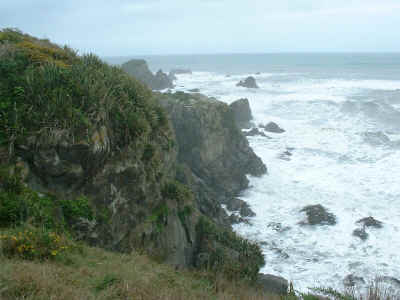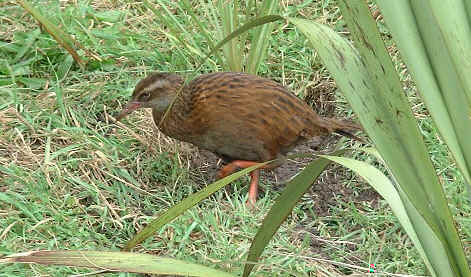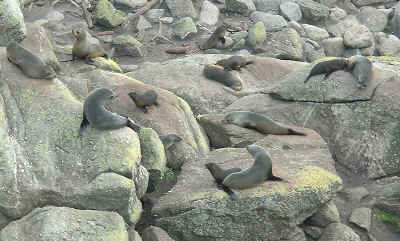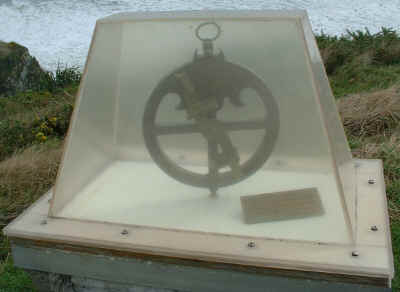| We walked the track along the edge of the cliffs towards the seal colony
listening to the booming crash of the sea against the rocks. This is where a tape recorder
would server better than a camera. However, pictures and decription is all we've got. Abel
Tasman first sighted the land now called New Zealand.
It is rugged coast and, with the exception of the two sounds, without a single
harbour of refuge. |
 |
 |
Finally after 5 weeks of touring South Island and looking under every bush and
shrub without success, a Weka shows up right in front of us in the parking lot. Then three
more appear. Amazing. The Westcoast Weka is quite abundant here, and we
saw several more as we moved north up the coast.
The Weka, like the Kiwi, is a flightless NZ bird. It uses its strong claws and
sharp beak to grub for insects in the underbrush. |
| A fur seal colony with cows and pups lounging on the sunwarmed rocks. You can
just see a couple dark pups feeding, while other imitate mom. There were
several dozen animals here, but only cows and pups. The males have long left the colony
for fun and frolic in other areas of the coast. |
 |
 |
When Abel Tasman sailed off this coast the seas were calm and winds light. He
describes drifting 8 miles in one day in the current and soft offshore night breezes. This
astrolabe monument was placed here by the Dutch Navy to commemorate the great explorers
feat. It is a brass replica and looks functional. Unfortunately the plexi display case has
crazed in the sun.
It's also amazing that this monument, with astrolabe intact, has not been
vandalized. I guess people of that ilk don't go tramping. |
|
 S/V
TETHYS
S/V
TETHYS S/V
TETHYS
S/V
TETHYS